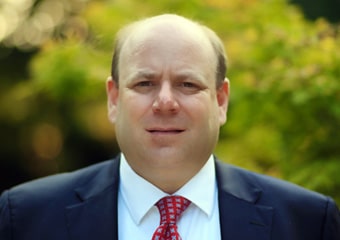Traditionally, trial court judges followed State v. Edwards, 298 S.C. 272, 379 S.E.2d 888 (1989) when explaining circumstantial evidence to jurors. In addition to requiring the State to prove every circumstance beyond a reasonable doubt, Edwards required:
[A]ll of the circumstances so proven be consistent with each other and taken together, point conclusively to the guilt of the accused to the exclusion of every other reasonable hypothesis. It is not sufficient that they create a probability, though a strong one and if, assuming them to be true they may be accounted for upon any reasonable hypothesis which does not include the guilt of the accused, the proof has failed.
In State v. Grippon, 327 S.C. 79, 489 S.E.2d 462 (1997), our Supreme Court strayed from State v. Edwards and recommended the following jury instruction:
There are two types of evidence which are generally presented during a trial—direct evidence and circumstantial evidence. Direct evidence is the testimony of a person who asserts or claims to have actual knowledge of a fact, such as an eyewitness. Circumstantial evidence is proof of a chain of facts and circumstances indicating the existence of a fact. The law makes absolutely no distinction between the weight or value to be given to either direct or circumstantial evidence. Nor is a greater degree of certainty required of circumstantial evidence than of direct evidence. You should weigh all the evidence in the case. After weighing all the evidence, if you are not convinced of the guilt of the defendant beyond a reasonable doubt, you must find [the defendant] not guilty.
Later, in State v. Cherry, 361 S.C. 588, 606 S.E.2d 475 (2004), the Court held “that the recommended language in Grippon is the sole and exclusive charge to be given in circumstantial evidence cases in this state,along with a proper reasonable doubt instruction.” Both Grippon and Cherry were three-to-two decisions. Chief Justice Toal dissented in both cases.
In recent years, however, the Supreme Court has seemed poised to overrule Grippon and Cherry and return to the Edwards circumstantial evidence instruction. On Tuesday, April 2, 2013, the Court heard oral arguments in State v. Logan. The Supreme Court roster of cases framed the issue in Logan:
Appellant argues that the trial court erred in providing a circumstantial evidence jury charge in accordance with State v. Grippon. . . . Appellant asserts that the circumstantial evidence charge explained in Grippon is no longer valid in light of this Court’s decisions in State v. Bostick, 392 S.C. 134, 708 S.E.2d 774 (2011) and State v. Odems, 395 S.C. 582, 720 S.E.2d 48 (2011), and that the trial court should have provided the circumstantial evidence charge as explained in State v. Edwards. . . .
Bostic and Odems, both decided in 2011, reversed convictions and entered directed verdicts of acquittal because the State’s evidence merely created a suspicion of guilt. In Odems and State v. Hernandez, 382 S.C. 620, 677 S.E.2d 603 (2009), Chief Justice Toal pointed out that, despite the Court abandoning the Edwards instruction, the Edwards circumstantial evidence definition “illustrates the lack of evidence” in these two cases. Clearly, Chief Justice Toal has not abandoned the position she took when dissenting in Grippon and Cherry. Based on the votes in these three recent cases, it appears that four justices—Toal, Kittridge, Beatty, and Hearn—might be ready to bring back the Edwards circumstantial evidence jury instruction. It is not clear where Justice Pleicones might stand on this issue. Although he joined the majority in Bostic, he concurred in result only in Odems and did not participate in Hernandez.
A decision is expected in State v. Logan later this year. After that case is decided, please click here to read the South Carolina Supreme Court’s opinion. Because the Court’s decision might not be retroactive, lawyers should request the Edwards circumstantial evidence charge in writing to help preserve the client’s right to benefit from any change in the law.
Click these links to view the Supreme Court roster for April 2013, State v. Cherry, State v. Grippon, State v. Hernandez, State v. Bostic, and State v. Odems.
About SC Supreme Court Watch: SC Supreme Court Watch will be a recurring series dedicated to identifying potentially significant criminal law issues pending before the Court and reporting administrative actions by the Court involving criminal law in our state.



